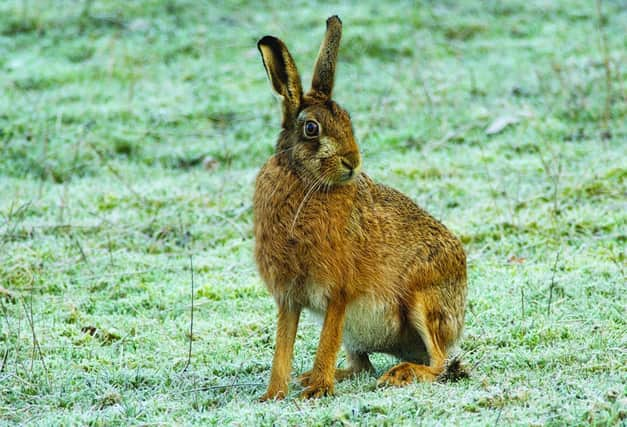A look at the work of Yorkshire Wildlife Trust


The wildlife charity cares for more than 100 nature reserves, including Adel Dam in Leeds and Flamborough Cliffs, working for a wilder Yorkshire by restoring habitats for wildlife, protecting species, managing and advising on the impacts of a changing climate.
We look at some recent highlights ...
North Yorkshire
Yorkshire Peat Partnership completed restoration plans for more than 40,000 hectares of blanket bog in Yorkshire, an area just over the size of the council area of Bradford, with a further 2000 hectares funded for 2023.
Advertisement
Hide AdAdvertisement
Hide AdThe Trust completed a three-year project to improve water quality on the River Wiske in North Yorkshire with the Environment Agency and landowners, creating new and improved riverbank and wetland habitat for wildlife and support for local farmers.
The Wild Ingleborough partnership continued into its third year, increasing the existing 1,200 hectares of new land large-scale landscape restoration by 420 hectares. The team and volunteers also planted more than 66,000 native trees, creating one of the first examples in England of re-establishing the natural tree line by helping natural habitats spread across the mountainside.
East Yorkshire
A pioneering partnership to restore 74 acres of seagrass meadow and reintroduce half a million oysters into the Humber with Orsted started with the goal of storing large amounts of carbon and improving water quality.
Eighteen Nofence collars were fitted to highland cattle, meaning the Trust is now able to conservation-graze areas that were not able to be fenced and therefore could not be safely grazed.
Advertisement
Hide AdAdvertisement
Hide AdThis has already made a noticeably positive effect on biodiversity at Spurn, Wheldrake Ings and Brockadale nature reserves.
A record-breaking eighty minke whales were spotted on August 28 off the North Yorkshire coast by one of the Trust’s sea watch observers alongside members of the public.
It’s been a good year for brown hares, with anecdotal evidence from the Trust’s work on the Wolds and speaking with other landowners improving areas for habitat, suggesting numbers are on the rise.
West Yorkshire
A population of rare white-clawed crayfish was found thriving in enclosed Luddenden Brook in Calderdale, previously thought lost in Yorkshire after they were last seen in 2014 and a testament in part to partnership water quality restoration work.
Advertisement
Hide AdAdvertisement
Hide AdThe Trust completed a significant project at Adel Dam in Leeds thanks to funding from Biffa. Visitors to the reserve next to Golden Acre Park can now enjoy new and improved visitor hides, trails and information.
The Bradford Urban Discovery Project and Nature Friendly Schools project finished with fantastic results for youth engagement across Yorkshire.
In particular as part of the Nature Friendly Schools project the Trust worked with 44 schools across Bradford, Huddersfield, Leeds, Wakefield, Barnsley, Doncaster, Hull, York and Bridlington, running 232 education sessions and engaging 7,675 people.
Across Yorkshire, more than 800 amazing volunteers gave more than 41,000 hours of their time this year to help care for the reserves and the Trust’s wild places.
Advertisement
Hide AdAdvertisement
Hide AdBlackbirds, wood pigeons and sparrows were the top three spots in the third Great Yorkshire Creature Count in June when more than 3,000 participants looked for 30 species in gardens and neighbourhoods across Yorkshire.
More than 7,000 people attended the Trust’s programme of 390 events throughout the year to enjoy and watch wildlife. Including other school and group sessions, it has engaged with more than 10,700 people this year.
Rachael Bice is chief executive of Yorkshire Wildlife Trust, a member of the Yorkshire and Humber Climate Change Commission and signed a Climate Action Pledge on behalf of the Trust.
She said: “Yorkshire is home to some wonderful wildlife and wild places, some of it unique and all of it truly special.
Advertisement
Hide AdAdvertisement
Hide Ad"We’re proud to care for wildlife from the peatlands of the Dales right across to the marine wildlife of the North Sea, from rare bitterns, black-winged stilts, and water voles through to our more common hedgehogs, finches and seabirds.